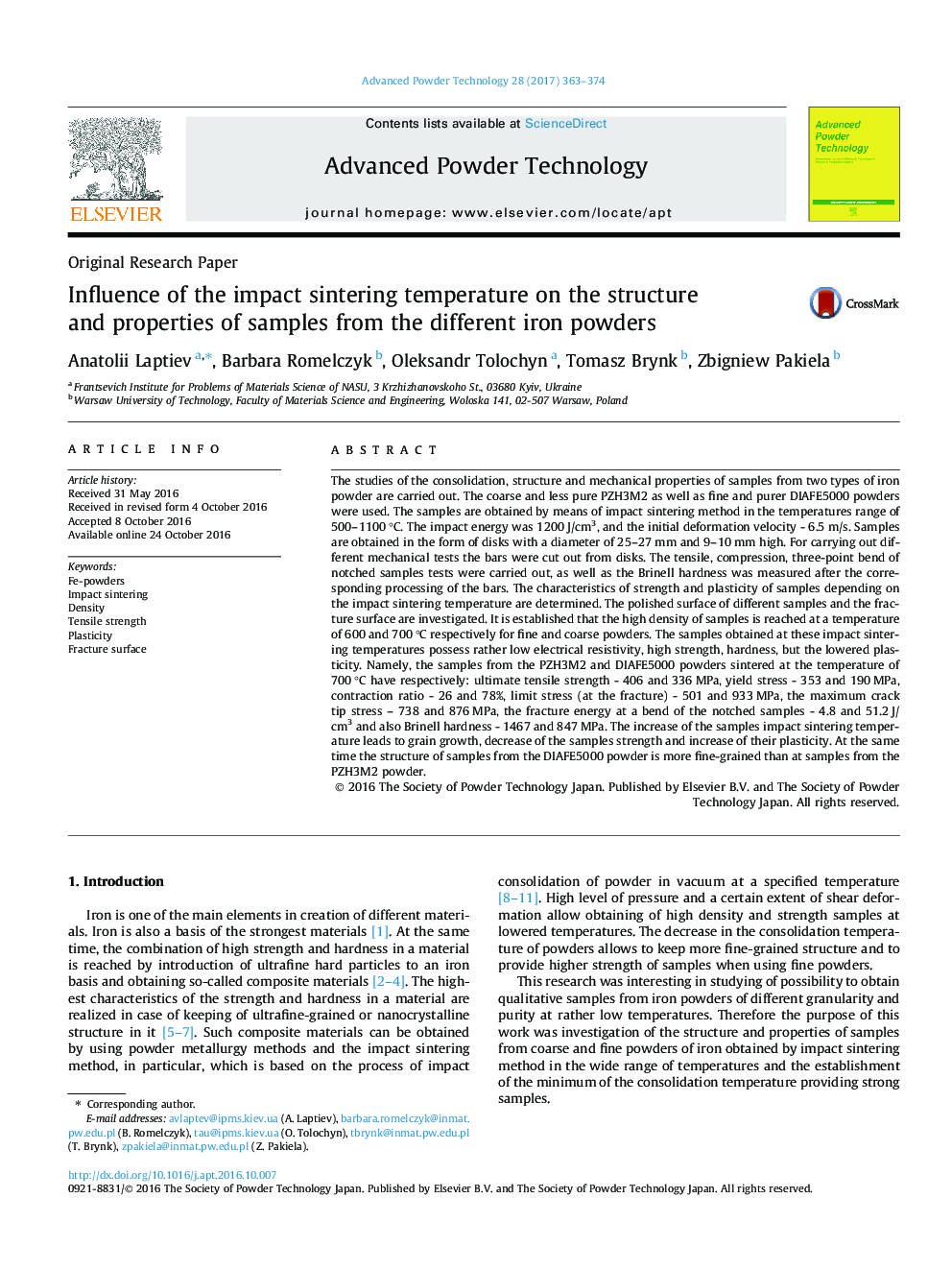| Article ID | Journal | Published Year | Pages | File Type |
|---|---|---|---|---|
| 6464610 | Advanced Powder Technology | 2017 | 12 Pages |
â¢The impact sintering method for Fe powders consolidation is used.â¢Iron powders with the particles size of 50-150 μm and 3-10 μm are used.â¢The impact consolidation with energy of 1200 J/cm3 is carried out at 500-1100 °C.â¢High density is reached at 600 and 700 °C respectively for fine and coarse powders.⢓Low-temperature” samples have more fine-grained structure and higher strength.
The studies of the consolidation, structure and mechanical properties of samples from two types of iron powder are carried out. The coarse and less pure PZH3M2 as well as fine and purer DIAFE5000 powders were used. The samples are obtained by means of impact sintering method in the temperatures range of 500-1100 °C. The impact energy was 1200 J/cm3, and the initial deformation velocity - 6.5 m/s. Samples are obtained in the form of disks with a diameter of 25-27 mm and 9-10 mm high. For carrying out different mechanical tests the bars were cut out from disks. The tensile, compression, three-point bend of notched samples tests were carried out, as well as the Brinell hardness was measured after the corresponding processing of the bars. The characteristics of strength and plasticity of samples depending on the impact sintering temperature are determined. The polished surface of different samples and the fracture surface are investigated. It is established that the high density of samples is reached at a temperature of 600 and 700 °C respectively for fine and coarse powders. The samples obtained at these impact sintering temperatures possess rather low electrical resistivity, high strength, hardness, but the lowered plasticity. Namely, the samples from the PZH3M2 and DIAFE5000 powders sintered at the temperature of 700 °C have respectively: ultimate tensile strength - 406 and 336 MPa, yield stress - 353 and 190 MPa, contraction ratio - 26 and 78%, limit stress (at the fracture) - 501 and 933 MPa, the maximum crack tip stress - 738 and 876 MPa, the fracture energy at a bend of the notched samples - 4.8 and 51.2 J/cm3 and also Brinell hardness - 1467 and 847 MPa. The increase of the samples impact sintering temperature leads to grain growth, decrease of the samples strength and increase of their plasticity. At the same time the structure of samples from the DIAFE5000 powder is more fine-grained than at samples from the PZH3M2 powder.
Graphical abstractDownload high-res image (114KB)Download full-size image
